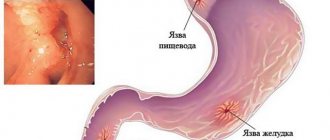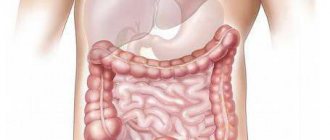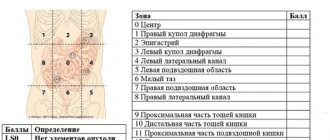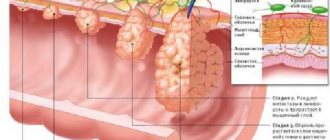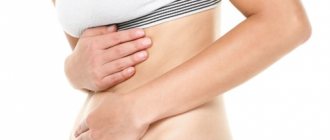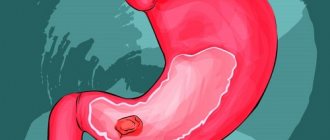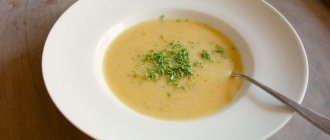Duodenal ulcers in most cases are complicated by bleeding. According to statistics, the problem occurs in every 10th patient with ulceration of the organ walls. Ulcerative bleeding in the duodenum develops when the vessels of the ulcerated tissues are damaged. The complication of the disease manifests itself clearly and intensely - sharp pain, blackening and liquefaction of the stool, chilling, nausea, and less often, fainting after/during defecation.
It is not uncommon for complications of lesions of the duodenal mucosa to progress to the stage of bleeding.
Causes
Manifestations of a bleeding wound can be:
- sudden massive (profuse) blood loss caused by exacerbations or factors influencing the development of peptic ulcer disease (sins in the diet, stress, alcohol);
- minor blood loss, which often occurs from the use of unauthorized medications or junk food.
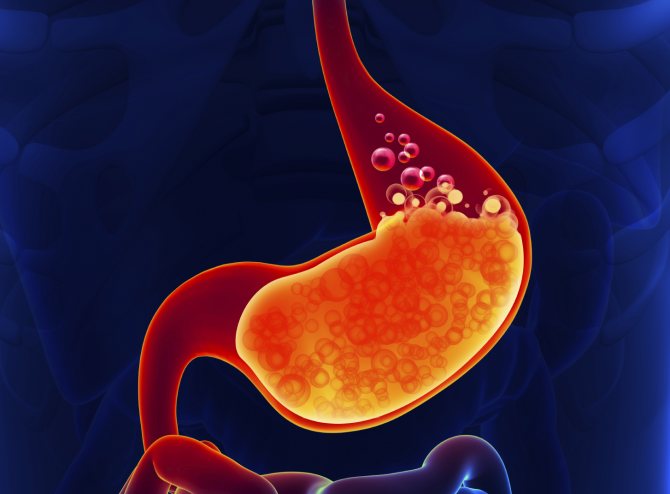
The reasons for the opening of duodenal bleeding can be external and intraintestinal.
Provoking factors for the development of blood loss are:
- neurotrophic damage to the walls of the organ;
- nonspecific ulcerative colitis or exacerbation of other gastrointestinal diseases;
- deficiency of vitamins C, P, K with an imbalance in their balance in the body;
- atherosclerosis of gastroduodenal vessels;
- psycho-emotional and physical stress;
- abdominal injury.
Symptoms
The clinical picture of bleeding depends on its intensity. The more abundant the blood loss, the stronger and more pronounced the complicated peptic ulcer disease manifests itself:
- Blood loss up to 10%:
- the patient is calm or slightly agitated;
- slight pallor of the face;
- cold extremities;
- rapid pulse;
- decreased blood pressure;
- reducing the number of urinations.
- Blood loss up to 45%:
The symptoms of internal intestinal bleeding directly depend on the degree of blood loss.
- severe pallor of the skin;
- obvious cyanosis of the nose, lips;
- dyspnea;
- pulse - over 140 beats/min;
- Blood pressure - below 100 mm Hg. Art.;
- oliguria.
- Blood loss over 50%:
- loss of consciousness;
- profuse, cold, clammy sweating;
- severe shortness of breath;
- weak pulse;
- lack of systolic pressure;
- Oligoanuria.
Main symptoms of the disease:
- Bloody vomiting, which occurs due to reflux of intestinal contents into the stomach. The vomit turns dark brown, similar to dried blood. As blood loss intensifies, vomiting may occur.
- Melena or tarry stool. Formed as a result of bleeding from a duodenal ulcer with blood loss over 800 ml. The stool takes on a liquid or mushy, sticky consistency with an unhealthy sheen. With massive bleeding, the stool will be scarlet.
- Pain syndrome is sudden, sharp, strong. After which Bergman's syndrome develops - a sudden cessation of pain.
Bleeding from an ulcer
Under the influence of chemically aggressive substances, areas with an altered cellular composition appear on the gastric mucosa. The sequence of development of mucosal pathology is as follows:
- erosion - an area with a missing top layer of cells;
- ulcer - an area of deeper damage;
- trophic ulcer - a non-healing wound that affects the mucous and submucosal layer of tissue;
- stomach ulcer;
- perforated ulcer.
In most cases, trophic stomach ulcers bleed, so the division is arbitrary. A perforated ulcer forms if the patient does not undergo treatment or it is not effective enough. During perforation the following occurs:
- penetration of the mucosal defect to the deep layers of muscle tissue;
- bleeding into the abdominal cavity and stomach, bilateral outflow of blood;
- rupture of the thinned muscle corset of the stomach;
- release of gastric contents into the abdominal cavity;
- peritonitis, a large-scale inflammatory process of the abdominal organs;
- Without urgent medical attention, the next stage is the death of the patient from septic shock.
The amount of bleeding can be life-threatening, but patients usually die from septic shock rather than blood loss. If a patient is diagnosed with a stomach and duodenal ulcer, he can independently determine the onset of bleeding by the following signs:
- sudden muscle weakness, dizziness;
- lightheadedness or fainting;
- decreased tone of blood vessels and blood pressure - perceived as chills, dizziness, weakness and a desire to lie down;
- nausea and vomiting - vomit is colored with fresh (bright scarlet) or coagulated blood (dark burgundy);
- feces have a characteristic black color and a viscous consistency, like tar.
A bleeding ulcer of the stomach and duodenum does not lead to peritonitis immediately, but in the absence of proper treatment. Bleeding can be chronic and then quickly become acute.
Kinds

Ulcerative bleeding when the duodenum is affected occurs due to damage to blood vessels in the tissues of the organ. If a small vessel in the area of the ulcer is damaged, the tissues lose little blood, which is often asymptomatic. If a large plexus is affected, then obvious bleeding develops with signs of acute blood loss.
Consequently, bleeding from a duodenal ulcer can be:
- Hidden, arising against the background of damage to a small capillary. Blood loss in this case is minimal, but the condition can be maintained for a long time. You can understand that a bleeding ulcer has appeared by using the Gregersen reaction. By eliminating the irritating factor and proper nutrition, the wound bleeds less and gradually begins to scar on its own. The risk of relapse is high.
- Explicit, in which the main symptoms of bleeding appear: vomiting, melena, pain, weakness. This condition requires immediate medical attention, otherwise death occurs when half the blood volume is lost.
- Long-term, manifested by changes in blood composition, anemia, deterioration of healing processes, chronic fatigue and a significant decrease in quality of life.
The danger of an open ulcer
In the case when a stomach ulcer opens, acute pain begins after eating, which leads to the person completely refusing to eat. The result is serious exhaustion, blood loss in which leads to severe weakness and dystrophy.
In a situation where a person has an ulcer and profuse bleeding begins, blood loss occurs very rapidly. In this case, symptoms develop:
- hypovolemic shock;
- swelling of the meninges;
- acute dysfunction of the liver and heart;
- intoxication.
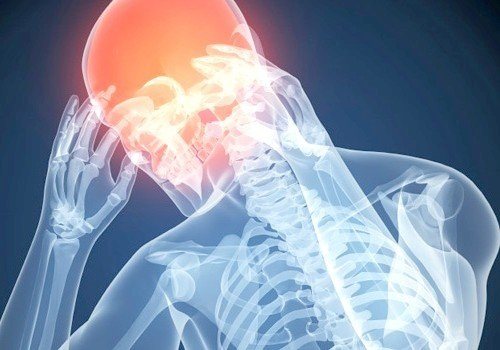
The opening of bleeding may be accompanied by symptoms of cerebral edema
In this condition, when the functions of many organs are impaired, the risk of death is quite high.
The degree of ulcer bleeding of the 12 duodenum
There are 4 degrees of bleeding severity, determined by the volume of blood lost:
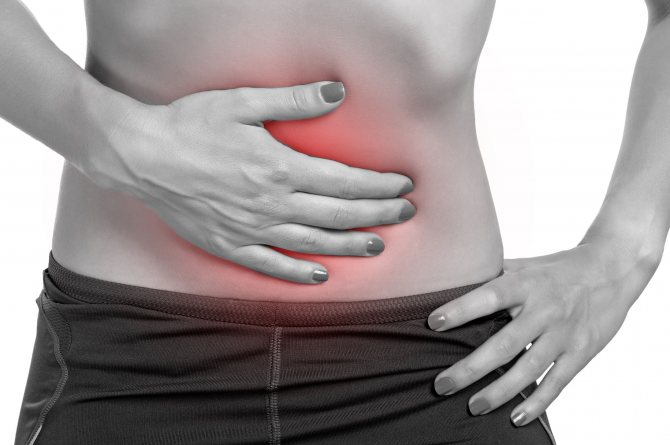
With more than 40% blood loss due to an ulcer in the duodenum, a person loses consciousness and there is a threat of death.
- Mild, when the patient’s condition is satisfactory, weakness and dizziness are possible. A deficiency of bcc is detected - up to 20%, hemoglobin - 100 g/l with hematocrit - up to 0.30.
- Medium, when the patient's condition worsens. BCC deficiency increases to 30%; hemoglobin drops to 70 g/l with a hematocrit of 0.30-0.35.
- Severe when the patient’s condition is severe with intensified pain radiating to the heart. BCC deficiency increases to 40%, hemoglobin drops to 70-50 g/l with hematocrit below 0.25. Blood pressure drops to 60 with increased heart rate (up to 150 beats/min).
- Extremely severe, when the patient loses consciousness, turns blue, becomes covered in sticky, cold sweat, the pulse and blood pressure cannot be felt. The BCC deficit exceeds 40%. Hemoglobin is below 50 g/l with a hematocrit of 0.20.
Indications for surgical treatment
If the bleeding is severe, the area of the ulcer is very large, conservative treatment may be ineffective. There is a known list of absolute indications for extensive surgical intervention for ulcerative bleeding:
- Massive blood loss.
- Significant anemia of the patient.
- The development of the clinical picture of hemorrhagic shock is a rapid decrease in blood pressure, pallor of the skin, rapid pulse and breathing, a decrease in hemoglobin levels below 70 grams per liter.
- Indications for urgent intervention are the failure of conservative therapy within 48 hours.
If there is no confidence that the bleeding has been reliably stopped, patients undergo planned surgical treatment, especially if bleeding has occurred more than once.
In the postoperative period, the volume of circulating blood is replenished, the level of hemoglobin is normalized, and the hemodynamic parameters of the body are normalized.
Treatment of the disease

The therapeutic regimen is based on the sequential elimination of bleeding, prevention of relapse and treatment of ulcers. Therapy can be done conservatively and/or surgically.
The basis of drug treatment is:
- taking medications against Helicobacter;
- a course of medications aimed at stabilizing acidity in the stomach and stimulating mucosal regeneration processes;
- following a strict diet.
What to do and how to treat?
Drug treatment
Bleeding ulcers can be treated with medications that help stop the bleeding. Doctors prescribe the following medications to patients:
- Aminocaproic acid. Helps reduce the intensity of resorption of formed blood clots. The medicine is injected into the vein using a dropper.
- "Dicynon." It is prescribed to activate the formation of thromboplastin in the bloodstream, which promotes blood clotting.
- Calcium chloride or gluconate. Calcium ions combine with oxygen to influence the formation of a blood clot. After using the drug, the permeability of the vascular walls decreases, after which they contract better, and gastric ulcer bleeding stops.
- Vitamin K. Improves the synthesis of components of the blood coagulation system, but the effect does not occur immediately, but a day after administration.
- Fresh frozen plasma. A natural complex remedy that includes a complex of coagulation factors. It is injected dropwise into the vein to stop bleeding.
- "Cryoprecipitate." Contains plasma and other necessary clotting substances that are effective for bleeding stomach ulcers.
Any medication for peptic ulcers must be prescribed by a doctor, since self-administration of pharmaceuticals can lead to increased bleeding and irreparable consequences.
Diet food
To prevent internal bleeding from peptic ulcers from occurring and becoming complicated, it is necessary to follow a special diet. In the first days after an exacerbation, the patient is advised to fast and not eat anything. You can quench your thirst by eating a small piece of ice or drinking 2-3 tablespoons of water. On the 2nd day after intensive therapy, you can take some food in liquid form. For a bleeding ulcer, food includes the following foods:
- scrambled eggs;
- jelly;
- steamed cutlets;
- soups with a slimy consistency;
- porridge;
- mashed potatoes;
- tea without sugar;
- lean white meat;
- dried fruits compote.
For peptic ulcers accompanied by bleeding, exclude the following foods from the diet:
- spicy, salty and fatty foods;
- smoked meats;
- sour fruits;
- legumes;
- vegetables that are irritating to the gastric mucosa;
- fatty cream products;
- alcohol.
Return to contents
Radical therapy - surgery
When a stomach ulcer bursts and leads to heavy bleeding, emergency surgery is required. The pathology can be eliminated using the following surgical methods:
- ligation or suturing of a burst ulcer;
- clipping with application of medical clips to the bleeding vessel;
- angiographic embolization;
- open surgery for a bleeding gastric ulcer, in which the formation is excised to intact tissue and the gastric walls are sutured across.
Return to contents
Medicines
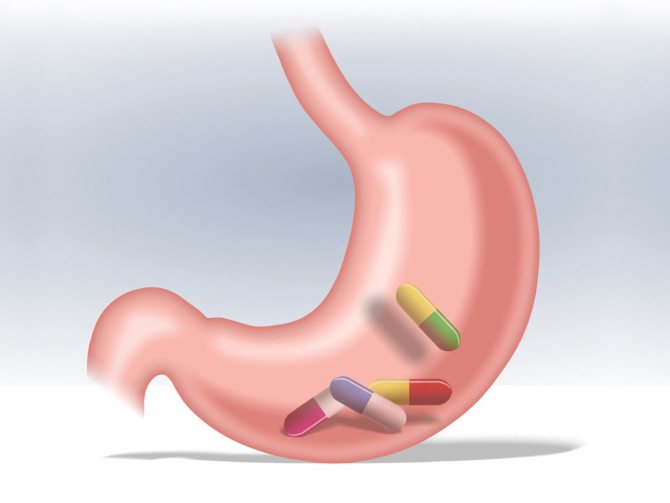
The treatment regimen for conditions caused by blood loss in duodenal ulcers can be adjusted depending on the severity and degree of blood loss. Typical medications:
- Antisecretors - to reduce the secretory activity of the stomach, relieve acidity and inflammation:
- histamine blockers: Ranitidine, Famotidine, Cimetidine;
- PPI: “Pariet”, “Omeprazole”;
- anticholinergics: Gastrin.
- Enveloping and astringent medications - to create a protective film on the intestinal mucosa: “De-Nol”, “Vikalin”, “Vicair”.
- Prokinetics - to restore motor skills and relieve symptoms in the form of chronic nausea and vomiting: “Cerucal”, “Trimedat”, “Motilium”.
- Antibiotics: Amoxicillin, Tetracycline, Metronidazole.
- Antacids for heartburn and cleaning the gastrointestinal tract: “Maalox”, “Phosphalugel”, “Almagel”.
- Analgesics, antispasmodics - to relieve pain: “No-Shpa”, “Baralgin”.
- Preparations for general restoration of the mucous membrane and the body: “Actovegin”, multivitamin complexes containing B vitamins.
Diagnostic methods and treatment
A specialist who suspects a patient has a duodenal ulcer will usually take a blood sample to check for the presence of Helicobacter pylori in the stomach cavity and rule out other possible diseases.
After the initial examination, the patient may be referred to a gastroenterologist for further examination.
The specialist may do an X-ray of the abdominal cavity, including part of the stomach, or a computed tomography scan in order to determine the presence of disorders of the duodenum or stomach.
To confirm the diagnosis, an endoscopic procedure is also performed, during which a flexible tube containing a fiber-optic camera is inserted into the throat.
The camera is aimed at the duodenum, so the gastroenterologist can clearly see the ulcer.
Treatment for a duodenal or gastric ulcer depends on its size, associated symptoms, and the underlying cause.
Oral antibiotics and prescription antacids can clear up most ulcers in about six weeks.
Surgery may be necessary if excessive bleeding occurs or if the disease does not respond to medications.
After treatment, patients usually receive instructions to maintain a healthy diet and avoid smoking and excessive drinking to prevent future gastrointestinal problems.
In addition, doctors can provide information about alternatives to NSAIDs to reduce the risk of recurrent ulcers and determine a new list of recommended medications of this type.
In general, for most patients suffering from duodenal or gastric ulcers, a four to eight week course of medicine is usually recommended.
It makes it possible to reduce the amount of acid secreted by the stomach.
Most often, in order to properly treat an ulcer, so-called proton pump inhibitors (PPIs) are used.
This is a group of medications that affect the cells lining the stomach wall by reducing acid production.
In this case, for duodenal ulcers, medications such as Esomeprazole, Lansoprazole and Omeprazole are taken, and have different names.
Sometimes another category of medications called H2 blockers may be used. They are also called histamine H2 receptor antagonists.
Each H2 blocker works differently to reduce acid production.
These medications consist of drugs such as Cimetidine, Famotidine, Nizatidine and Ranitidine.
Due to the fact that the acidity level decreases significantly after the period of use of such drugs expires, the ulcer quickly disappears.
Almost all duodenal or gastric ulcers are caused by bacteria of the genus Helicobacter pylori. In this regard, the main point of therapy is to cleanse the body of this infection.
If this infection remains in a person, the ulcer is likely to recur immediately after stopping the acid suppressant medication.
In addition, the patient needs to be treated with acid suppressing medications to reduce the amount of acid in the stomach.
This treatment is required to allow the antibiotics to be effective and kill the bacteria.
The patient is recommended to carry out the combination therapy for one week.
By completing one course of such treatment, it is possible to completely cleanse the body of an infection called Helicobacter pylori.
When the causative agent of the infection is destroyed, the risks of recurrence of duodenal and gastric ulcers are greatly reduced.
At the same time, in some patients, in rare cases, bacterial agents can be detected again at a certain stage of life, regardless of how effective the treatment was.
After treatment has been completed, your doctor may recommend a test to check that Helicobacter pylori is truly gone.
It is advisable to take the analysis at least four weeks after completing the prescribed combination therapy regimen.
In most situations, the test is negative, which means that the infection has passed. If this does not happen, an additional course of therapy with a different combination of antibiotic drugs may be recommended.
Certain medical experts believe that for patients with duodenal ulcers, this confirmation test is not needed if symptoms are not observed.
When symptoms disappear, this can often indicate that the ulcer and its causative agent (Helicobacter pylori) have disappeared.
However, a number of experts argue that you need to protect yourself. In this regard, an experienced attending physician will, in any case, advise taking a test to confirm the disappearance of the bacterial agent.
If the duodenal ulcer is caused by medication, it is highly recommended that the patient stop using anti-inflammatory medications. This will allow the ulcers to heal normally.
The patient is also usually given an acid suppressant medication for several weeks (as previously noted).
However, in most situations, anti-inflammatory therapy is required to relieve the symptomatic manifestations of arthritis or other similar diseases.
One solution to this problem would be to take acid-suppressing medications daily for a short period of time.
This will reduce the volume of acids produced by the stomach and will sufficiently reduce the likelihood of duodenal and gastric ulcers.
Previously, surgical treatment was necessary to remove duodenal ulcers.
This type of therapy was often used before Helicobacter pylori was discovered as a major factor in the development of duodenal ulcers, and also before new types of acid-suppressing drugs became available.
Surgery is now generally only necessary if complications from a duodenal ulcer develop, such as severe bleeding or perforation.
Recommendations for proper treatment of duodenal and gastric ulcers also include the use of certain foods.
They consist of:
- bananas;
- honey;
- carrot juice;
- raw cabbage;
- products with a high amount of fiber in their composition (such as oats, barley, lentils and fruits);
- foods rich in vitamin A (this includes tomatoes, peaches and watermelon).
The best known causes of duodenal ulcers are infections, bacteria and the consumption of heavy, spicy foods.
You should not ignore the symptoms of a duodenal or stomach ulcer; they can be very dangerous for the digestive tract and health in general.
Other foods recommended for consumption during duodenal and gastric ulcers are listed below.
In particular, high-fiber foods such as carrots, beans, and soy products will be very beneficial for any ulcer.
They are very effective in the treatment of duodenal ulcers.
Cold or warm chamomile tea can also cure any type of infection during duodenal and stomach ulcers.
You can drink this tea every day, as it helps keep the internal gastrointestinal system “clean” and flush out any bacteria from the stomach and small intestine.
Any fruits and berries rich in vitamin A should be consumed regularly throughout the day.
Some of the best examples include watermelon, peaches, carrot juice, oranges and blackberries, as all types of such fruits and berries reduce the risk of developing duodenal ulcers.
It is also recommended to use raw honey to treat duodenal ulcers. You can find many ways to incorporate honey into your regular diet.
This natural product helps reduce inflammation in the stomach and duodenum.
You can spread honey on either wheat bread or mixed grain bread and eat it regularly.
It is a good habit to add honey to your regular menu, as this product is good for health and helps protect the body from many diseases and allergies.
Folk remedies
To increase the effectiveness of drug treatment, reduce symptoms and reduce the risk of recurrent bleeding, it is recommended to use the following traditional medicine recipes:
- 1 fresh egg white with 1 tsp. sugar and 1 tbsp. l. olive oil. Consume 1 tbsp every morning on an empty stomach for 10 days. l.
- Drink cabbage juice 75 ml 3 times a day. before the meal. Course - up to 21 days.
- Potato broth is drunk 250 ml daily.
- 2 tbsp. l. dry powder from nettle leaves (stinging or nettle), pour into a thermos and pour 250 ml of boiling water. Drink after steeping for 2-3 hours instead of tea, several sips all day long. Nettle can be added to soups, salads and main courses.

Potato juice is used as a folk remedy - 2 tbsp. l. pour dry knotweed powder into a thermos with 500 ml of boiling water, leave for 2 hours. Drink 100 ml 3 times a day. half an hour before the start of the meal.
- A decoction of cinquefoil taken in a ratio of 1:10 with water. Boil the mixture for 20 minutes. and leave for 3 hours. Drink 1 tbsp. l. up to 5 rubles/day
Diet No. 1
A special diet will help stop bleeding. It is prescribed in the first 11 hours from the start of bleeding. The basis of nutrition is the consumption of food that promotes peristalsis of the duodenum, enveloping the walls and constricting blood vessels, for example:
- fresh milk;
- cream;
- oil.
If a duodenal ulcer is complicated by blood loss with intense vomiting, infusion nutrition is prescribed to bypass the gastrointestinal tract. After stopping the bleeding, it is allowed to administer milk, butter, cereals with milk diluted with water, mashed potatoes, day-old white bread, and non-concentrated freshly prepared juices. Inclusion in the menu of foods with vitamins K and C, which help increase blood clotting and reduce the degree of vascular permeability.
After stabilization of the patient’s condition, he is transferred to a diet with table No. 1a. Nutrition rules:
- taking liquid, semi-liquid food in the form of soups and mucus porridges;
- inclusion of eggs in the diet (steam omelettes, soft-boiled eggs);
- fractional meals - up to 8 rubles / day;
- Duration of treatment is 3-12 months.
The second subtype of therapeutic diet with table No. 1b involves enriching the menu after the onset of persistent improvements in the patient’s condition. Nutrition rules:
- fractional meals - 8 times a day;
- inclusion in the menu of minced chicken and cottage cheese, crushed to a puree state;
- permission to eat small quantities of steamed cutlets, boiled lean meat, and dried wheat bread.
The approximate daily calorie content is 3200 kcal, which includes 110 g of fat, 450 g of carbohydrates, 100 g of protein.
First aid
If you suspect that a patient has started bleeding, you should immediately provide him with first aid. The actions in this case should be similar to those prescribed for any internal hemorrhage.
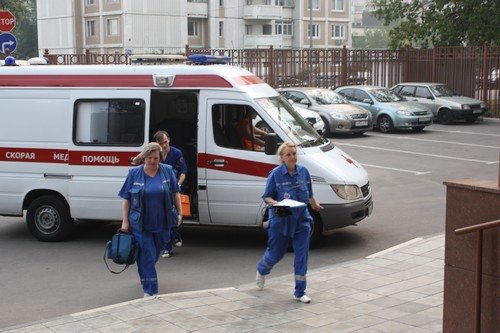
Place the patient on a flat, hard surface, place a cushion under his feet to ensure a rush of blood to the head and avoid oxygen starvation of the brain. The patient needs complete rest at this time; any physical activity can provoke increased bleeding.
The patient should not be given food or water, as it may stimulate the digestive processes. But you can apply a heating pad with ice or a bottle of cold water to his stomach. Every fifteen minutes the cold should be removed for three minutes and then applied again. This way you can achieve vasoconstriction in the affected area and temporarily stop ulcer bleeding.
Under no circumstances should you rinse the victim’s stomach or give any medications! For a bleeding ulcer, treatment should be prescribed by a qualified physician. Keep the patient conscious until the ambulance arrives. If you notice that he is ready to faint, moisten a piece of cotton wool with a small amount of ammonia and bring it to the patient’s nose. Letting ammonia smell directly from the bottle is strictly prohibited!
After the ambulance team arrives, examines the victim and confirms the symptoms of ulcer bleeding, the first aid procedure continues. To begin with, the patient is given two tablespoons of an ice-cold solution of aminocaproic acid, a good hemostatic drug. After some time - a teaspoon of calcium chloride and two crushed diet tablets.
If for one reason or another the patient cannot take these drugs, he may be asked to swallow pieces of ice. True, the effectiveness of this remedy is ambiguous. On the one hand, the cold compresses the blood vessels, but, on the other hand, swallowing movements can further damage the gastric mucosa and increase bleeding.
Prevention
Prevention of duodenal ulcers includes:
- strict adherence to the principles of a healthy lifestyle;
- proper, regular nutrition;
- quitting smoking, drinking alcohol and harmful foods.
Since perforation of an ulcer is provoked by unfavorable neuropsychic factors, stress, sudden physical strain, infections, diet disorders, alcohol or certain medications, eliminating the risk of provoking factors will avoid bleeding.
